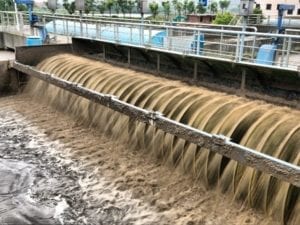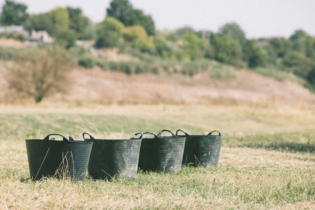Even though 88% of South African households have access to water, the country remains the 39th driest in the world.
Furthermore, close to half of the Waste Water Works across the nation are not in a good state, with 80% of them at medium to high risk. Fresh water is considered one of the most precious commodities a country can have. It is therefore critical that pollutants such as acid mine drainage are effectively addressed. To this end, Dr Robert Huddy, molecular biologist in the Centre for Bioprocess Engineering Research (CeBER) of the University of Cape Town (UCT), has highlighted how the country must optimise the processes involved in cleaning up industrial effluent waters. According to him, using micro-organisms within tailored bioprocesses to do so, is an essential part of the solution. “As a result of various industrial processes, water gets contaminated with undesirable compounds, for example in gold mining, processed water is polluted with cyanide and thiocyanate. These toxic compounds are harmful to people, animals and the environment” he says. And even though there are various physical and chemical processes involved in cleaning up this water, his says focus should be on micro-organisms like bacteria or fungi that can use their metabolism to remove dangerous compounds present in industrial effluents.“Essentially, we are getting these micro-organisms to eat the compounds that we do not want. It is about harnessing the capabilities of these ‘bugs’ to clean up the water. Of course, this is not the first time people are doing this, but our approach to the development of these treatment processes is unique. We do so by gaining a better understanding of all the micro-organisms that are present and trying to resolve their respective roles within these processes.”
He says that different organisms are living in the bioreactors used to clean up the water systems. Traditionally, engineers would look at these reactors and monitor whether they are working. “What we are trying to do is delve into more detail and understand how these micro-organisms are working together to remove the unsafe compounds. For example, in a gold mining waste water treatment process, we have identified more than 150 different micro-organisms present with less than five of them involved in the breakdown of the pollutants. It is about providing process engineers with more detail in order to rationally design process systems to clean up these effluents more efficiently,” he says. Part of this work entails studying the inter dependencies of each of these organisms and the processes involved in having all of them present. “People must take a more sustainable view of waste water and how it can be re-used. We want to change the public perception of effluent waters, from a waste product to a potential resource for the development of new processes and livelihoods through the recovery of value-added by-products. “By specifically looking at waste water from industry, we are creating an opportunity to significantly overhaul bioprocesses that can prevent long-term damage to the environment and create sustainable economic solutions for industry and surrounding communities. Sometimes you have to go small, microscopically small in fact, to have a big world impact.”







